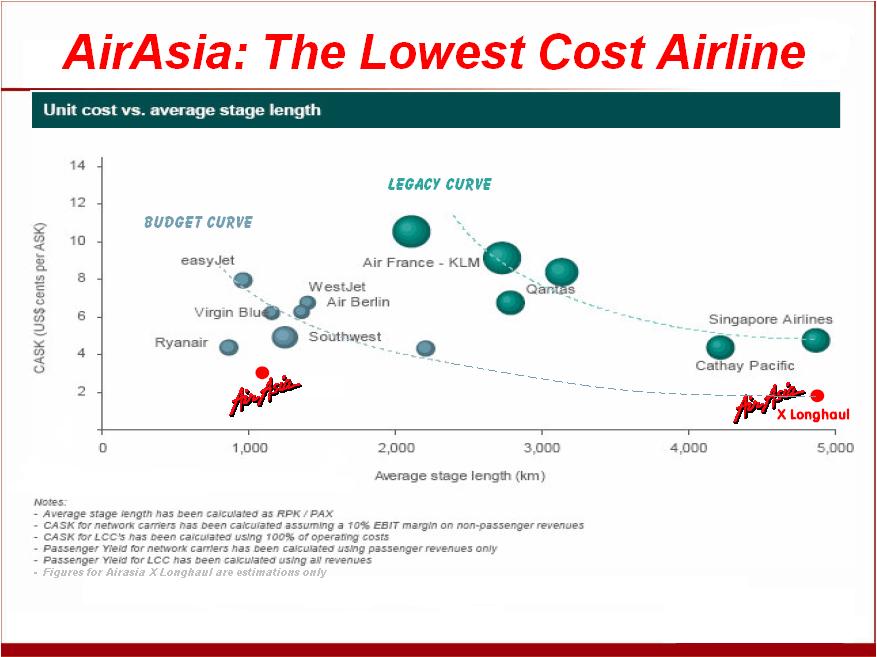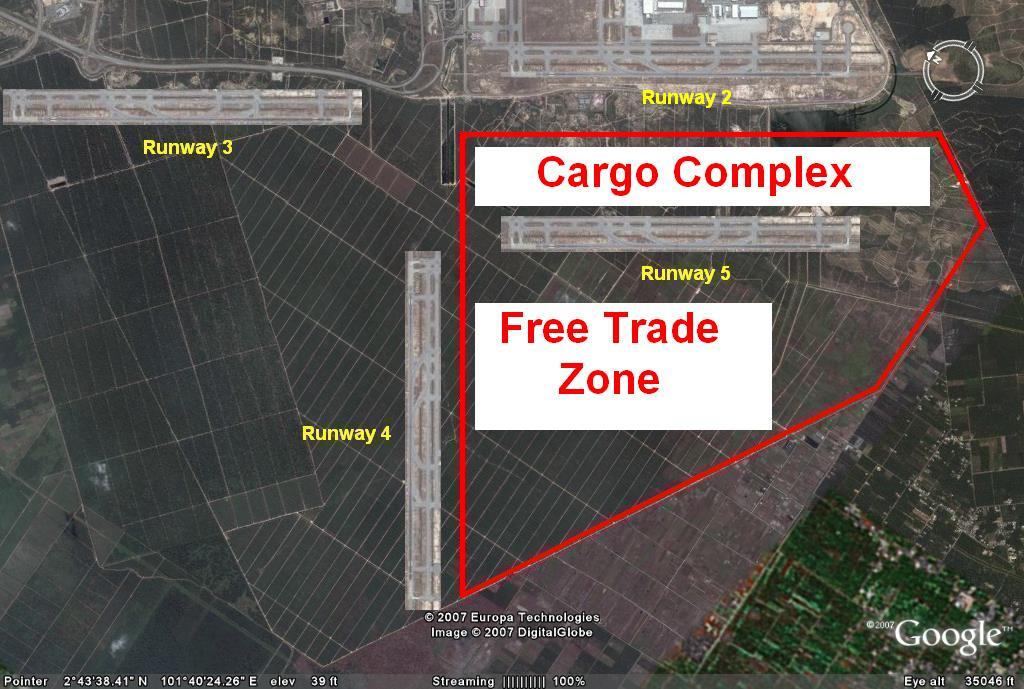
Cassava
-
Content Count
9 -
Joined
-
Last visited
Posts posted by Cassava
-
-
ii. If budget flights are allowed between KL-Singapore, KLIA will die an unnatural death. KLIA will become a feeder airport for Singapore's Changi. People will fly from KL to Singapore and then fly off from Singapore to the rest of the world. MAS will then die a natural death. So the request was declined.For SIA, losing RM40 million (S$17 million) profit from the KL-Singapore sector is chicken feed. Air Asia is feeding thousands of transit passengers from KL to Changi . Air Asia is providing RM19 bus rides from KL to KLIA. From KLIA, passengers fly almost free to Changi. From Changi the passengers can connect to the world.
only ignorant people would believe in the above arguments. fyi, airasia, like any other LCCs, has got no interlining agreement with any airlines hence connecting passengers will be issued two separate tickets and will have to retrieve their bags and carry it to the connecting airline for check-in. big hassle! moreover, SQ fare structure is such that if you travel kul-sin with onward connecting flight to say, London, your kul-sin sector is given away practically free. no need airasia, no need to carry your bag to connecting airline for another check-in.
-
...there will be a “premium” economy class, similar to business class on a regular airline....premium economy seat is a little more than double the price of a normal seat on the A330. It will be about the same as the economy fare on a full service airline.
AirAsia will also offer another first — fixed-back shell seats in economy class. Passengers will not have to recline their seats into the lap of the person behind them. Instead, the seat will slide forward. Such seats are normally found in business class.
AKX business class seat at MH/SQ economy class price! - AKX gonna rock the longhaul aviation industry imo
fixed-back economy seat - any photo?
-
No offence Cassava, but are you working for Air Asia X ?
No.
-
excerpt from Guardian Unlimited:
Branson close to securing stake in budget Fly Asian Express airline
Monday July 9, 2007
Sir Richard Branson is close to acquiring a stake in a budget long-haul airline that plans to fly between Asia and the UK.
Fly Asian Express will launch later this year and it is understood that the Virgin Group is in advanced talks to buy a 20% shareholding in the business. The Kuala Lumpur-based business is the brainchild of Tony Fernandes, the co-founder and chief executive of AirAsia, one of the most successful low-budget carriers in Asia.
Virgin Group declined to comment and Mr Fernandes could not be reached for comment. However, sources close to the talks confirmed that a deal was close. If the deal goes ahead, Virgin will have established position at both ends of a polarising airline market.
The success of all-business class airlines has led to Virgin Atlantic and British Airways announcing plans for first class-only services. In turn, budget airline executives including Mr Fernandes have predicted that the industry will split into two camps: 5-star airlines and 3-star airlines, with no-frills carriers making aggressive moves into the long-haul market.
Fly Asian Express expects to launch its first UK flight - from Kuala Lumpur to London Stansted - around next Easter. Return flights will cost between £130 and £200. Food and in-flight entertainment will cost extra and the airline plans to offer a number of flat-bed seats at the front of the aircraft. With about 380 seats per plane, the venture is expected to break even when the plane is 56% full.
Meanwhile, Virgin Atlantic declined to comment on a report in today's Daily Telegraph that Singapore Airlines is reviewing its 49% stake in the transatlantic carrier. The review could lead to a sale or flotation of the holding, which analysts value at around £1bn. Virgin Atlantic and Singapore Airlines could not be reached for comment.
-
VIABILITY OF LONG HAUL, LOW COST AIRLINE
Current Airline Industry Landscape:
For economy class fares, Asian legacy airlines (e.g. SIA, MAS) generally charge around 5 US cents per km (before fees/taxes) and for business class, a whopping 25 US cents per km (before fees/taxes)!
A business class passenger occupies around 3 times gross floor space compared to an economy class passenger. However, business class fare is generally 5 times more than economy class. Even after considering the additional frills provided, business class yields higher return to a legacy airline than economy class.
For various competitive reasons, legacy airlines seasonally offer promotional economy class fares at below cost (C/ASK) thus economy class fares of 3 US cents per km is not unheard of. By offering economy class seats at sub C/ASK, high yielding business class is effectively subsidizing the economy class passengers (for Asian legacy airlines, the C/ASK for economy class is around 4 US cents and 14 US cents for business class).
After considering the above facts, some old-school airline commentators questioned the viability of AirasiaX’s low cost, long-haul model. They reasoned that the legacy airlines can charge very competitive economy class fares because of the higher yield from their business class seats (i.e. business class cross subsidizes economy class).
Enter The AirasiaX:
The buzzword is cost, cost, cost. With C/ASK of 2 US cents, AirasiaX can consistently price its economy class seats at around 3 US cents per km without incurring losses (seasonal promotional prices can even go much lower than 3 cents per km).
More importantly, AirasiaX’s downplayed and so-called “premium seats” are in actuality each a full-sized (and possibly best-of-breed) business class seat and its C/ASK is only 7 US cents. Hence don’t forget this: the “premium seats” are AirasiaX’s secret weapons to strike at the very core of its legacy competitors.
-
Due to its lean cost structure as reflected by low C/ASK, Airasia X can consistently offer 50% cheaper fares than other legacy airlines.

Hitherto yield structure of a typical legacy airline is as follow: Economy (low yield), Business (high yield). In future, Airasia X shall bring stiff competition not only to Economy class but most importantly to the currently fat yielding Business class. Hence expect legacy airlines high yielding Business class to face downward price pressure going forward.
my 2 cents
p/s
All this while, the significance of Airasia X's so-called "premium seats" have been downplayed. With 2-2-2 configuration, they are in fact full-sized (and possibly best-of-breed) business class seats.
-
FACT 1:
For economy class fares, legacy airlines (e.g. SQ and MH) generally charge between 4-5 US cents per km (before fees/taxes) and for business class, a whopping 25 US cents per km (before fees/taxes)!
FACT 2:
A business class passenger occupies around 3 times gross floor space than an economy class passenger. However, business class fare is generally 5-6 times more than economy class. Even after considering the additional frills provided, business class yields higher return to a legacy airline than economy class.
FACT 3:
For various competitive reasons, legacy airlines sometimes offer economy class fares at sub-C/ASK (thus economy class fares of 2-3 US cents per km in not unheard of). By offering economy class seats at sub-C/ASK, high yielding business class is effectively subsidizing the economy class passengers (for Asian legacy airlines, the C/ASK for economy class is around 4 US cents).
SCEPTICS OF AIRASIAX:
After considering the above facts, some airline commentators questioned the viability of AirasiaX’s low cost, long-haul model. They reasoned that the legacy carriers can charge very competitive economy fares because of the higher yield from their business class seats (i.e. business class cross subsidizes economy class).
PROPONENTS OF AIRASIAX:
The buzzword is cost, cost, cost. With C/ASK of 2 US cents, AirasiaX can on daily basis price its economy class seats at between 2-3 US cents per km without incurring losses (promotional prices can even go much lower than 2-3 cents per km). In addition, AirasiaX’s downplayed and so-called “premium seats” are in actuality each a full-sized (and possibly best-of-breed) business class seat and it’s C/ASK is only 7 US cents, minus the frills. Hence don’t forget this: the “premium seats” are AirasiaX’s secret weapons to strike back at the very heart of its legacy competitors.
-
from what i've been informed, part of the KLIA future masterplan will be scrap to facilitate the permanent LCCT...the permanent LCCT will be located exactly behind the MTB ( main terminal bulding )....this permanent LCCt will have direct access to both runways...But I tend to believe that the permanent LCCT will occupy the Present Site + KLAS + ACC
(Have direct access to both runways. Have 'airside' connectivity to MTB/Satellite terminals. Cheaper to develop as the existing KLAS/ACC complexes can be easily converted into passenger terminal):

ACC/KLAS complexes may be moved to 'permanent' Cargo Complex area:

I arrived at the above conclusions as I believe that:
1) In order to offer lowest possible LCCT airport taxes (as demanded by Airasia etc.), MAHB must be very very prudent on their LCCT capex.
2) The existing ACC/KLAS cargo complex area have limited room for 'long-term' expansions (if not mistaken design capacity only 1mn ton p.a.)

Air Asia
in General Aviation
Posted · Report reply
look carefully...the window seat is "reclined" but perhaps not fully